- News
- Reviews
- Bikes
- Accessories
- Accessories - misc
- Computer mounts
- Bags
- Bar ends
- Bike bags & cases
- Bottle cages
- Bottles
- Cameras
- Car racks
- Child seats
- Computers
- Glasses
- GPS units
- Helmets
- Lights - front
- Lights - rear
- Lights - sets
- Locks
- Mirrors
- Mudguards
- Racks
- Pumps & CO2 inflators
- Puncture kits
- Reflectives
- Smart watches
- Stands and racks
- Trailers
- Clothing
- Components
- Bar tape & grips
- Bottom brackets
- Brake & gear cables
- Brake & STI levers
- Brake pads & spares
- Brakes
- Cassettes & freewheels
- Chains
- Chainsets & chainrings
- Derailleurs - front
- Derailleurs - rear
- Forks
- Gear levers & shifters
- Groupsets
- Handlebars & extensions
- Headsets
- Hubs
- Inner tubes
- Pedals
- Quick releases & skewers
- Saddles
- Seatposts
- Stems
- Wheels
- Tyres
- Health, fitness and nutrition
- Tools and workshop
- Miscellaneous
- Tubeless valves
- Buyers Guides
- Features
- Forum
- Recommends
- Podcast
TECH NEWS
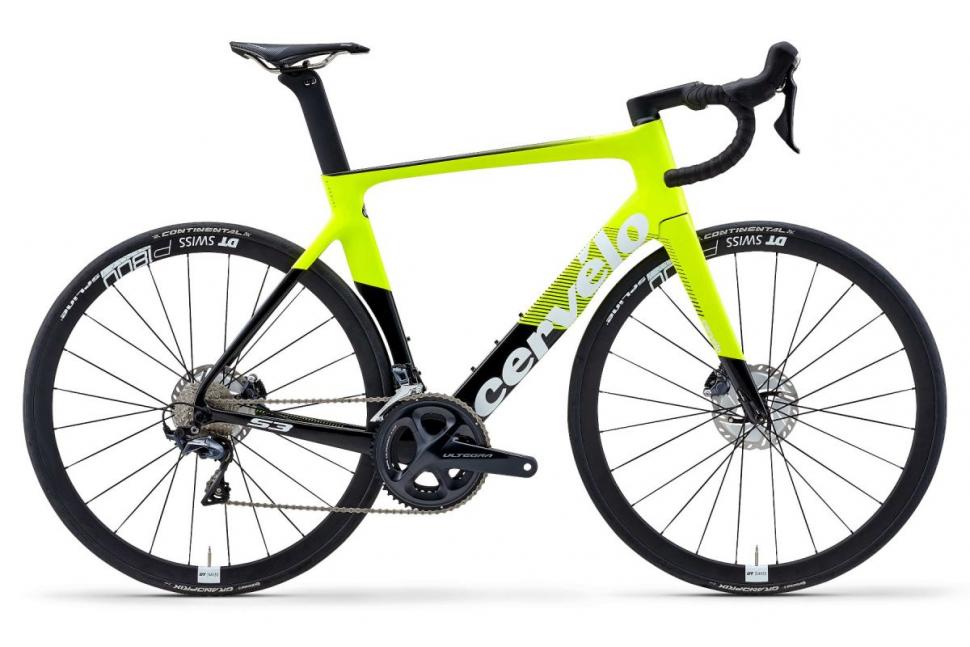 cervelo s3 20194
cervelo s3 20194Cervelo updates S3 - improved aero and disc or rim brakes
As well as completely redesigning its flagship S5 aero race bike, Cervelo has also taken the time to update its more affordable aero bike, the S3. The changes contribute to the new bike being “102g faster” than the current model, according to Cervelo’s wind tunnel testing claims.
The S3 takes many of the aero lessons of the S5 but dials it back a little, so no funky V-shaped stem and bonkers handlebar. And unlike the S5, which is only available with disc brakes, the S3 offers a choice of rim or disc brakes.
- Cervelo S5 Disc launched - disc brakes and new V-shaped stem
While the S5 grabbed all the headlines, the S3 is actually more interesting because the company claims to have made even bigger aero savings, reducing drag by 13 watts with the new S3 Disc compared to the previous version, and 7 watts for the new rim brake model. That compares to a 5 watt reduction on the S5.
Much of the development has concentrated on the front of the bike. There’s a regular fork, a new aero stem and handlebar, the latter routing the cables and brake hoses directly into the frame, providing a clean appearance with no exposed cabling.
To enable the internal routing, a special steerer tube has been developed with large slots for cables and hoses to be passed through. This new AB09 handlebar comes in four widths (38 to 44cm) and ST029 stem comes in 80 to 130mm lengths.
I wasn’t a huge fan of the aero handlebar on the S3 Disc I tested last year, the new design looks an ergonomic improvement with a more conventional shape. Better looking too, I might add.
The rest of the frame has been refined as well. The down tube has been placed lower and now wraps around the front wheel, much like the S5. This, says Cervelo, improves air flow over the frame. It’s the same with the seat tube as well, it wraps around the rear wheel, and there’s an aero seatpost with an internal seat clamp. To provide some comfort the rear stays have been designed to provide vibration damping.
- Review: Cervélo S3 Disc Ultegra Di2 2017
As well as improving the aero performance, Cervelo has also boosted frame stiffness, particularly around the bottom bracket for that all-important power transfer when sprinting for a KOM or finish line. It’s a lighter frame as well, a claimed 68g has been shaved off the disc brake version while the rim brake frame sees no weight difference. Weight is a claimed 1,100g for a size 56cm.
The disc brake S3 uses the now common 12mm thru-axles with flat mount interface brakes, and fully internal brake hose routing. The rim brake bike uses direct mount callipers on the front of the fork and at the top of the skinny seatstays, and 9mm quick release axles.
There’s been no change to the geometry, as there has been with the S5, so the numbers from the previous model are carried over to the new frame. The S3 offers a slightly less aggressive fit with a taller stack and shorter reach then the S5, making it a good choice for non-professionals who might want a bit of real-world comfort.
There will be four models available, basically, it comes down to mechanical or electronic Ultegra and disc or rim brakes. Prices will start at €3,999 rising to €6,399, and there’ll be a frameset option from €2,999. We don’t have UK prices yet but will update this story as and when we get them.
More info at www.cervelo.com
David worked on the road.cc tech team from 2012-2020. Previously he was editor of Bikemagic.com and before that staff writer at RCUK. He's a seasoned cyclist of all disciplines, from road to mountain biking, touring to cyclo-cross, he only wishes he had time to ride them all. He's mildly competitive, though he'll never admit it, and is a frequent road racer but is too lazy to do really well. He currently resides in the Cotswolds, and you can now find him over on his own YouTube channel David Arthur - Just Ride Bikes.
Latest Comments
- Rendel Harris 2 sec ago
I've got to be honest, I'm a bit of a hypocrite because although I think I would not renew at the new price on principle I do love cycling and also...
- ktache 7 min 46 sec ago
Bonus for buses and lorries hitting bridges?
- ktache 10 min 43 sec ago
In other Welsh driving news, this time good https://www.bbc.co.uk/news/articles/c78w1891z03o
- roboito 56 min 32 sec ago
I had this on my Forerunner 955 yesterday, needed a hard reset. The instructions were on the Garmin website. A time wasting annoyance but easily...
- Rendel Harris 1 hour 21 min ago
What's the power meter they use to provide the reference figure against which they make the claims for this one? Surely the former must be the...
- Rendel Harris 1 hour 23 min ago
I dunno, they complain that they spend all this money on cycle lanes and nobody uses them and then one does and...
- TheBillder 1 hour 44 min ago
It would be very interesting to know if there's any backward compatibility with anything. If a lever breaks on my rim braked Tiagra equipped bike,...
- David9694 3 hours 26 min ago
Pretty much all roads in the south lead to Argos, but beware some long lead times. ...
- bensynnock 3 hours 33 min ago
I'm not sure that 800 lumens is enough for a pitch black off road trail. I switched from an 800 to an 1800 and now I can actually see where I'm...
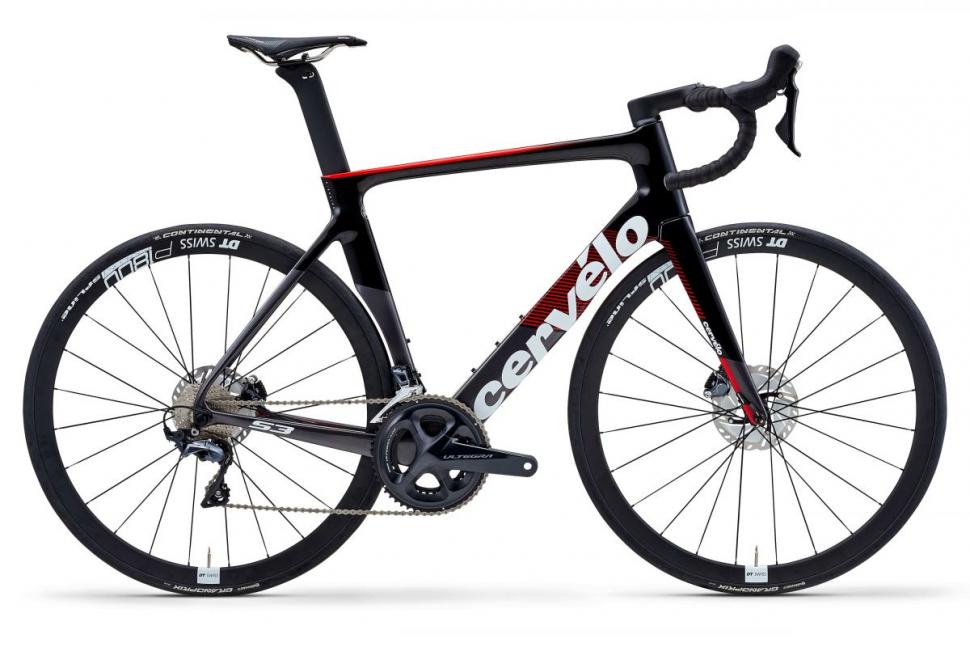
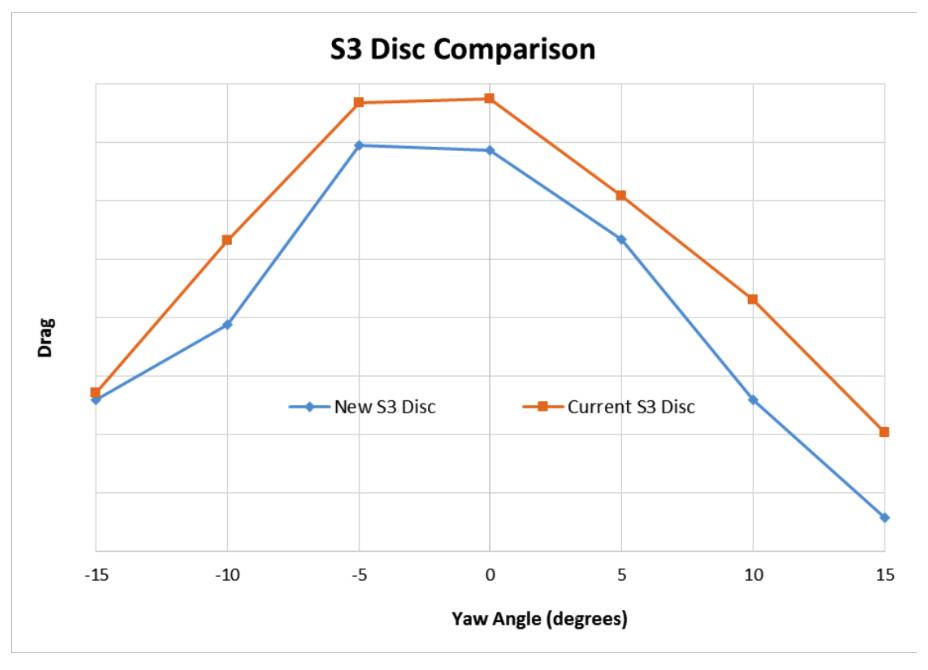
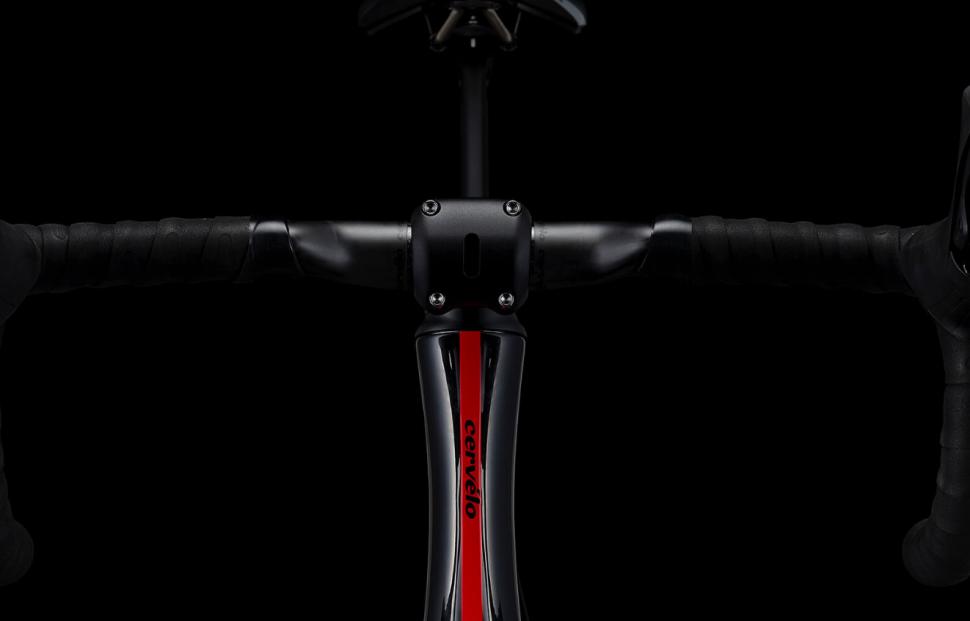

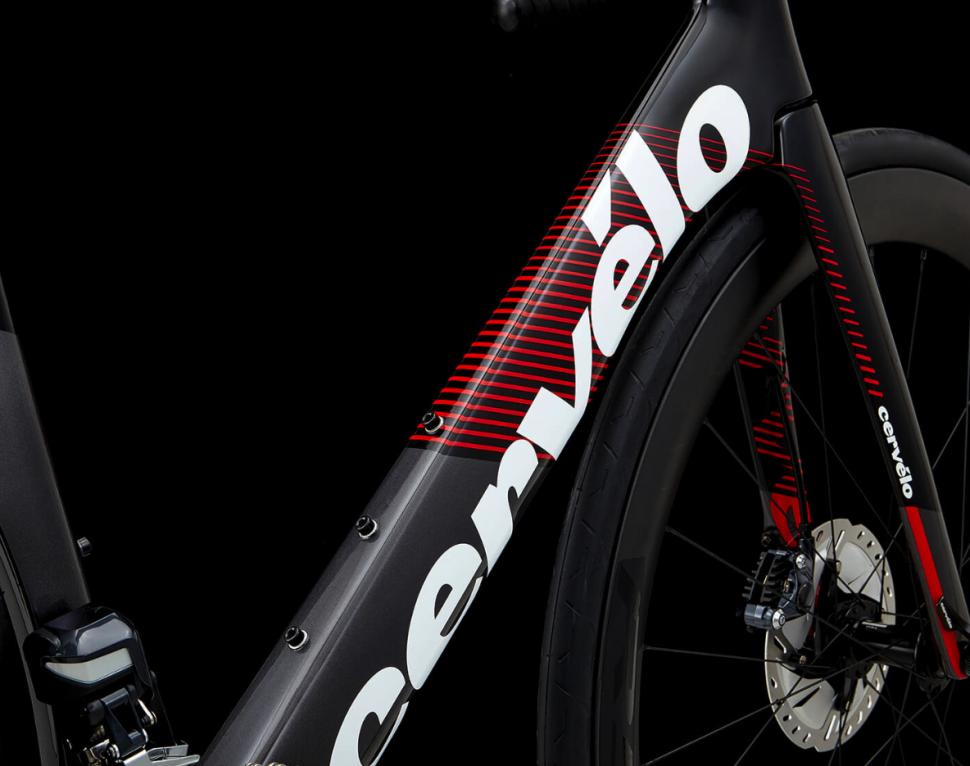

Add new comment
30 comments
Dave??? Seems to me that you have responded to all other posters except me! Have I done something wrong? I am guessing that you can't sort me out.
For all the mktg fluffing for me I read the expert reviews from people who ride lots of different bikes and then I decide if I like the colour hence why I have a purple CAAD 10.
You're not the only one. this one matches my bath cc kit. I even doctored the Bahrain sticker
DSC_0733.JPG
yeah, technically it should be newtons. since gravity is effectively a constant in the places you're likely to use a bike, the two are used interchangeably a lot of the time. i know, they shouldn't be, especially when it's a force that's not acting on a mass due to gravity, like here. i think the reason is that more people understand the magnitude of a gram than do a newton; a lot of people won't even have heard of one. we still don't know exactly the circumstances of that measurement, though.
you'll note that "102g faster" is in quote marks, because we're quoting what they're saying, and you'll notice that we tend to us the word 'claimed' ahead of any manufacturer's claim, because it's not something we're likely to be able to independently vefirfy. i suppose we could say "Cervelo claim it's faster, we're not allowed to tell you how much by because Welsh boy doesn't like it, so head over to their website to find out" but I really don't reckon that's going to catch on.
I did win a race once. Did a load of training but not in a wind tunnel. I think the egg would have fallen off the spoon if I had!
Aerodynamics - basically it's cheating. As is training.
Having said that, I've never won any races.
I think it's just dawned on me why not.
Still don't give a shit, but that is probably because I am not Sir Dave Brailsford. I am also quite happy that I don't do my riding in a wind tunnel and find the best way of improving my performance is finding a local hill. This is so cost effective that I don't have to pay a thing. Still a nice bike mind, but probably well out of my price range.
Any chance Mr Atkinson???
https://www.flocycling.com/aero.php
“FLO Aero Data
GRAMS OF DRAG vs. DEGREES OF YAW”
forgive them, they are American
If they're from the U.S, shouldn't they be using ounces rather than grams?
(I'm with Fluffy - they should be using Newtons to measure force).
https://drag2zero.co.uk/
“Wind tunnel testing is one of the most cost effective ways of improving your performance. An average rider travelling at 40 KPH will have 2kg of drag pulling him/her backwards.”
kg of drag, oh god your going to loose your merde over that.
My interpretation as a layman is this... imagine a strange scenario when you are riding at 40kmh, then some bloke leans out of a car window and hooks one of those luggage weighing scales onto your saddle, then gently applies the car brakes so that the scales read 2kg while you pedal harder to maintain 40kmh, for arguments sake requiring 20 watts extra on your power meter. Equally, if you changed position at 40kmh such that you had to put down 20 watts extra to maintain your speed, then the effect of the extra drag could be measured in KG.
Or something.
And in the case of the new Cervelo, the scales would read 102 grams.
All drag is measured in g the thing is out on scales and the air pushes it so creating a force on the scales in g
do yourself a favour and stop posting go and find out how it works then come back and say, oh I get it now, thanks.
and yes it’s easier to think that all bike aero things have lower drag at angles of yaw, most cycling is betweeen 0-12 deg of yaw so look at those values, for meaningful data.
But force is measured in Newtons. Just wondering what the 'g' is. Assumed it was grammes, but that's a mass. Unless it's acceleration due to gravity, but not sure how that works in the context either.
Edit - I suppose they might be using 'g' when they mean g m/s^2. But even then, wouldn't it vary with the speed of the air? So a single figure still doesn't tell me much, unless there's some convention that assumes the given figure is always at some particular speed, and that the response curve against speed is always the same shape.
I doubt most people know all those details, so it's largely a marketting thing I assume.
Do yourself a favour and don't answer if you haven't got anything useful to say.
t
you found it useful to know that most cycling is at 0-12 deg yaw, and I’m putting the rest in terms that are understandable, what are you doing? Saying everything is marketing BS? New bike is slightly faster for same effort, that’s what the marketing is saying, great if you have the old one, choose if it’s wirth while buying the new one. If you don’t have the old one, choose if this bike is the bike you wish to buy. If your just reading for information great, new bike is faster than old one and weighs a bit less.
Sorry I didn’t add any formulas, feel free to double up the number you put in your next post to make up for it.
"102g faster" Yet more pseudo science being perpetuated by journalists eager to lap up every claim made by a manufacturer. Total crap and if the website had any credibility it would stop regurgitating such rubbish.
Pont the reader to the manufacturer's site where these meaningless marketing claims are printed by all means but stop printing it yourself and then trying to justify/explain it, it only makes you look ignorant and makes people question the validity of anything else you print.
Cheers Dave, physics was never my strongest subject. Still a nice looking bike, mind! Can you sort it so that I can win one?
Cervelo's measure of "drag" is only useful if all measurements are carried out in the same test environment. Mind you it's no sillier than quoting improvements in Watts. The measurement needs to be "normalised".
However, what _appears_ to be more interesting, is the "huge" reduction in drag with moderate yaw angles. Leaving aside that those vertical scale lines may be spaced at ridiculously small intervals, this seems to imply that that the bike is best for races with a modest side wind! What's it like if yawed by 90 degrees?
Can anyone explain how the design leads to drag being lower when the centre line is yawed away from the direction of travel/air flow? Is this true for other bikes?
There's nothing to understand; it's meaningless marketing jargon. Grammes are a unit of mass and speed is not measured in grammes. It's like saying you are 30 seconds taller than your brother. And if you are, well done.
Funny you should say that.
I am exactly 2.354 radians slower than my brother*.
* I dont actually have a brother, but that doesnt stop this being gibberish.
think of it as if you were pushing it through the air and it takes less force to push it now. or you're lifting it up and it's lighter so less effort is required.
Sorry, still confused and don't really care. Nice looking bike mind.
you put it in a big room, blow a big fan at it* and see how much it pushes against a measuring thing. the less it pushes, the more aerodynamic it is. this one's 102g more aerodynamic than the last one
*the fan sucks in reality but it's the same thing really
That still doesn't explain what the 102g _means_. That's a mass. What mass is it measuring?
("This one goes up to 102. It's 102 more aerodynamic")
Not that it's of any relevance to anyone who isn't some sort of extreme wanna-be-pro athlete, even if it actually meant anything. I don't know why I'm in this thread.
Where you need to be is on any one of the hundreds of bike reviews, complaining that we're not giving each bike's weight in Newtons
The 102g saving is an empirical measurement, or at least a claimed one; real world wattage savings are dependent on the coefficient of drag of the bike and the rider together, which is much more of a movable feast. they're just saying the bike generates 102g less drag than the old one as measured in the wind tunnel, although obviously it'd be useful if they said at what wind speed and yaw, of course. the thumb-in-the-air ballpark figure often quoted is 5W saved at 30mph for every 50g of drag, which tallies reasonably well with the wattage figures they've also quoted.
they're not big numbers, of course. but i just dialled back my TrainerRoad workout today to 97% which was an equivalent of a 10W saving at FTP, and that was the difference between finishing it and not. so every little helps and all that
This is a very valid point.
Cerebral Velo guys are simply too cerebral for us all. Typical geeky marketing crap.
Maybe it accelerates at 102x gravity.
Thatd been my first reading too: that's a helluva acceleration!
102g faster eh? I thought the paint looked a few ounces brighter.